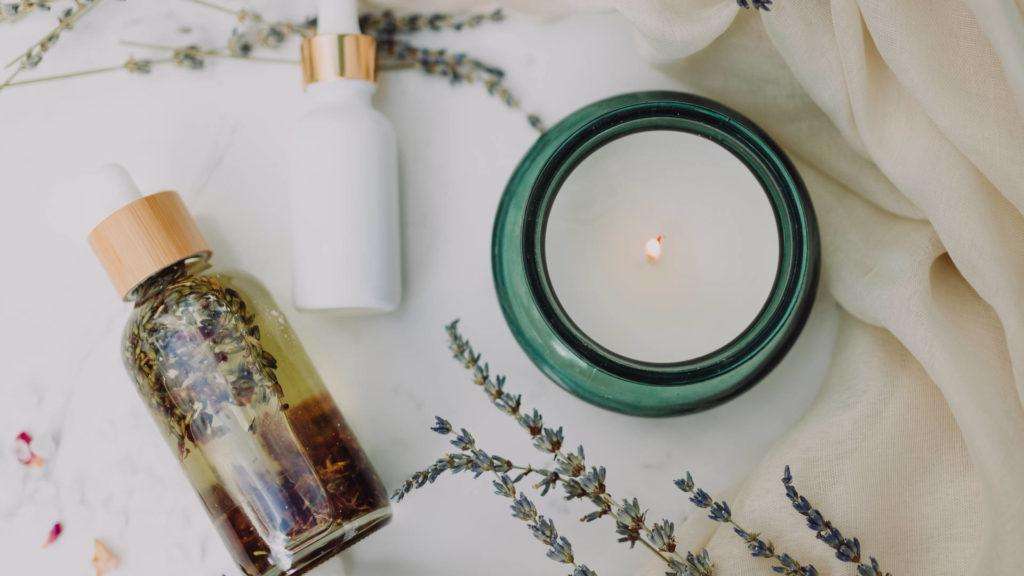Not sure what some terms are while you’re getting started with making spa products? Here is a list of some of the most common ones explained.
Common Candle Making Terms
Wax:
The main ingredient in candle making, which can be derived from various sources such as beeswax, paraffin wax, soy wax, etc.
Wicking:
A braided cotton or linen string that is used to provide a flame to the candle.
Melt pool:
The liquified wax that forms around the wick when the candle is burning.
Fragrance oil:
A scented oil that is added to the melted wax to give the candle its scent.
Pour temperature:
The temperature at which the melted wax is poured into the container or mold.
Burn time:
The length of time that a candle will burn before it runs out of wax.
Candle dye:
A coloring agent that is added to the melted wax to give the candle its color.
Candle mold:
A container or shape in which the wax is poured to create a candle.
Double boiler:
A heating method used to melt the wax by placing a container of wax inside a larger container filled with water.
Candle making kit:
A set of tools and supplies designed for making candles at home, which may include wax, wicks, fragrance oils, molds, etc.
Soap Making Terms to Know
Saponification:
The chemical process by which fats or oils are combined with an alkali (such as sodium hydroxide or potassium hydroxide) to form soap and glycerin.
Base oils:
The primary oils used in soap making, which form the bulk of the soap and provide the primary moisturizing and cleansing properties.
Lye:
A strong alkaline solution used in soap making to convert oils or fats into soap through the process of saponification.
Superfatting or Lye Discounting:
Superfatting is the practice of intentionally leaving a small percentage of unsaponified oils or fats in the finished soap to add extra moisturizing properties.
Fragrance oil:
An oil-based scent that is added to soap for fragrance.
Essential oil:
A concentrated, volatile liquid extracted from plants that is used to scent soap naturally.
Melt and pour soap:
A pre-made soap base that has been melted and can be poured into molds to create custom soaps.
Cold process soap:
The traditional method of making soap by combining oils and lye and allowing the mixture to saponify over a period of several weeks.
Hot process soap:
A method of making soap in which the saponification process is accelerated by heating the mixture of oils and lye.
Soap molds:
Containers used to shape and hold the soap mixture as it hardens and cures.
Terms to Know for Making Bath Bombs
Bath bomb:
A small, spherical or cylindrical shaped ball made of dry ingredients that dissolves when placed in water, releasing fragrance, moisturizing oils, and other beneficial substances.
Citric acid:
A weak organic acid used in bath bombs to create a fizzy reaction when combined with baking soda.
Baking soda:
A sodium bicarbonate used in bath bombs to create a fizzing effect when combined with citric acid.
Epsom salt:
A type of magnesium sulfate used in bath bombs to soothe sore muscles and relieve stress.
Cornstarch:
A fine white powder used in bath bombs to help bind ingredients together and create a smooth texture.
Essential oil:
A highly concentrated plant extract used in bath bombs to provide fragrance and aromatherapy benefits.
Witch hazel:
A natural astringent used in bath bombs to help ingredients stick together and harden.
Food coloring:
A water-based coloring agent used in bath bombs to add color and enhance their appearance.
Molds:
Various shapes, sizes, and designs that are used to form bath bombs into different shapes.
Moisturizing oil:
A type of oil, such as coconut oil or almond oil, used in bath bombs to provide skin-nourishing benefits.
Definitions for Making Homemade Lotion
Emollient:
A substance that softens and soothes the skin.
Humectant:
A substance that attracts moisture to the skin and helps to keep it hydrated.
Surfactant:
A substance that helps to emulsify and stabilize the lotion.
Preservative:
A substance that helps to prevent microbial growth and prolong the shelf life of the lotion.
Thickener:
A substance that adds viscosity and texture to the lotion.
Carrier Oil:
A base oil that helps to deliver the active ingredients of the lotion to the skin.
Essential Oil:
A highly concentrated oil that provides fragrance and additional skin benefits to the lotion.
Water:
A solvent that helps to dissolve and disperse the other ingredients in the lotion.
Wax:
A substance that helps to give the lotion a creamy texture and stabilizes the emulsion.
Antioxidant:
A substance that helps to protect the skin from free radical damage and premature aging.
Learn How to Create Luscious Bath Bombs, Soothing Creams, Aromatic Fragrance Products, and More!
Get your comprehensive, step-by-step guide to creating your own spa-quality products, for fun and profit!

